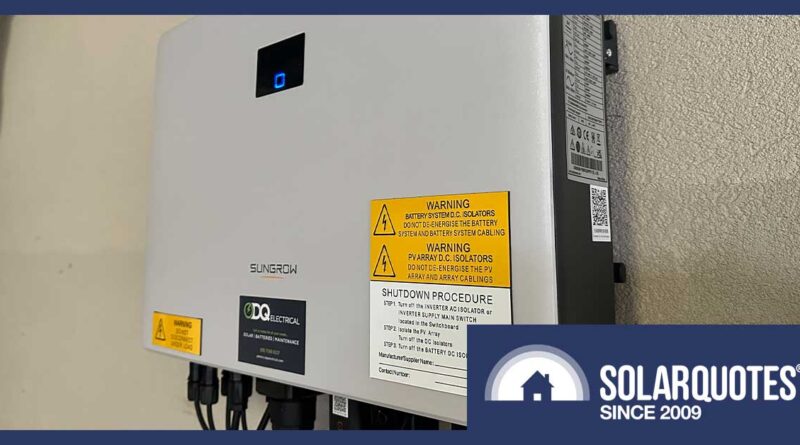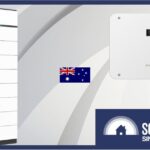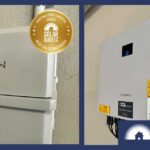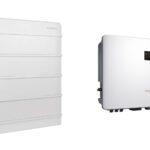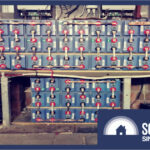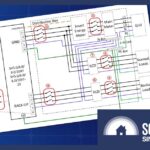Sungrow Hybrid Inverter Review: A Deep Dive into the SH5.0R
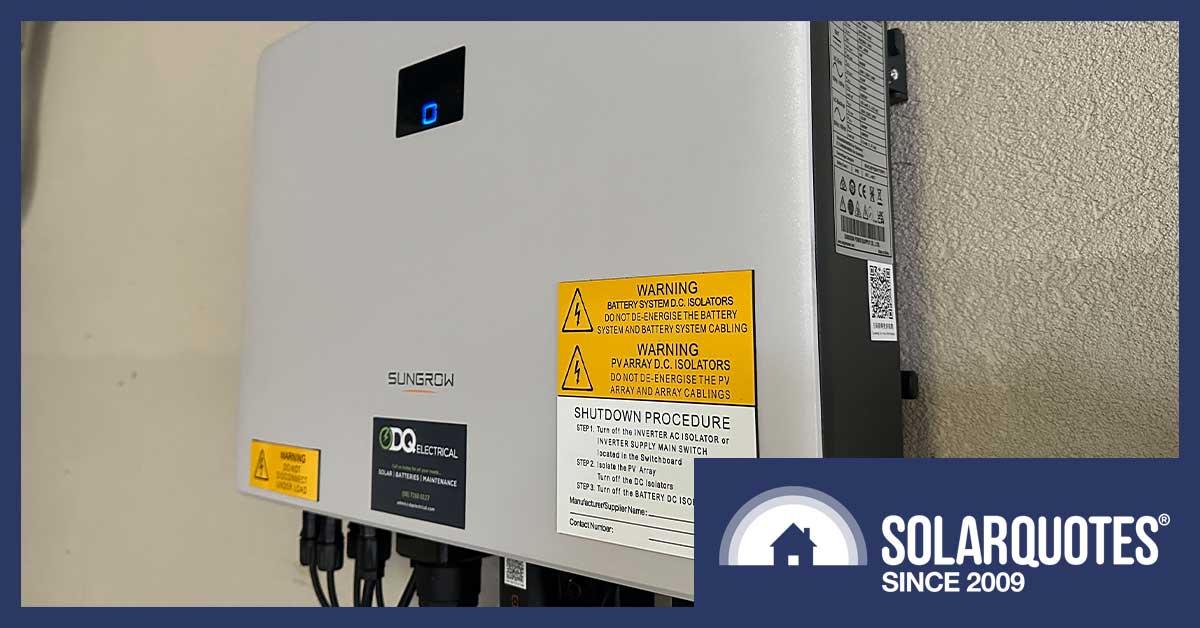
This post is part of our reviews of hybrid solar inverters – which when paired with a battery – can be good Tesla Powerwall alternatives. Here, I’m taking a closer look at the Sungrow SH5.0RS.
The catchy name SH5.0RS stands for Sungrow Hybrid 5.0kW Residential Single-Phase.
Compatible With Sungrow Batteries
The newest generation of hybrid inverters from Sungrow now pair with high-voltage DC batteries manufactured in-house.
Starting with a minimum of three 192volt 3.2kWh nominal bricks and a maximum stack size of 8 (25.6kWh):
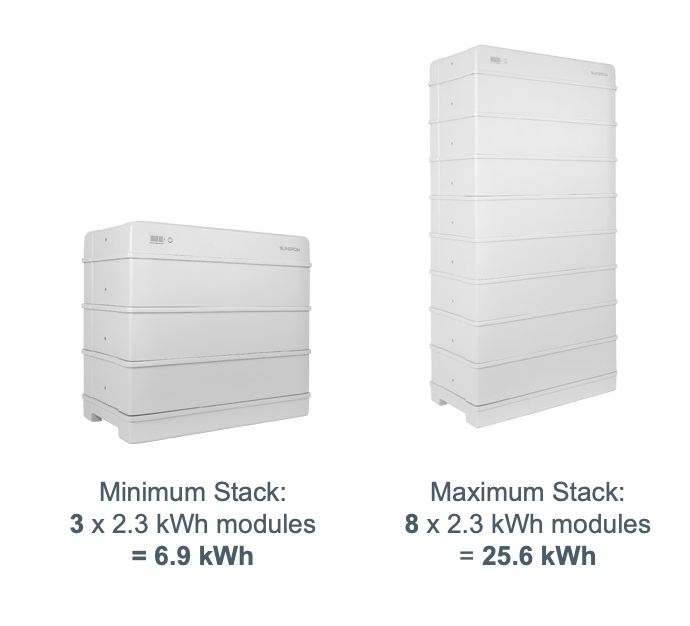
With further expansion of up to four parallel banks (102.4kWh):
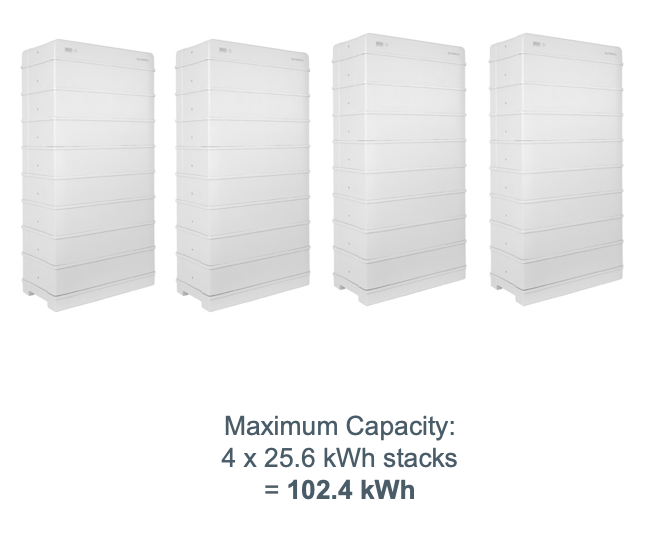
Easy To AC Couple More Solar Inverters
The ability to integrate another AC-coupled solar inverter makes these units much more attractive. You can either have legacy solar on the grid side or more Sungrow AC-coupled inverters on the backup side of the system.
This means the extra solar inverter (rated not more than the hybrid) can power loads directly – without bothering the battery. Great news if you want or need more daytime surge capacity. Better yet, the full-rated specifications available with a battery hybrid means you can load a Sungrow with 200% solar. That’s potentially 20kW of panels on the roof with a single-phase connection.
Ten Year Warranty
The warranty is specified as 10 years, and they even offer limited support for off grid operation, not that I would recommend it for anything but the most modest application.
If you want to know how Sungrow’s warranty compares with other manufacturers, Ronald has researched Sungrow inverter warranties extensively.
Current & Voltage Ratings
The SH5.0RS has far greater surge capacity and is a little more flexible in solar terms than Sungrow’s previous hybrid inverters. As panel wattages trend upward, solar current outputs are going up more than voltages, so the inverters are now given a suitably lower opening voltage window and more importantly, greater current ratings.
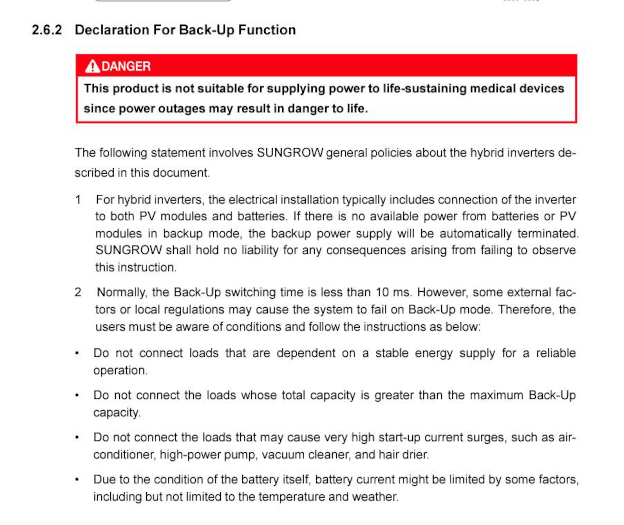
While some may claim UNINTERRUPTIBLE Power Supply, there is a well-defined difference between a UPS and an EPS system. So if you have critical applications, a hybrid inverter of any brand or type may not fit the bill. Props to Sungrow for being honest about it.
High Voltage Batteries
All new generation high voltage hybrid inverters use lower current, so they require much lighter cables from the inverter to the battery, and long cables will suffer less voltage drop. This means the batteries can be placed further away. These advantages come with a small trade-off in the form of an extra layer of complexity (and point of failure) in the battery management system compared to the older low-voltage models.
Backup Is *In Series* With The Grid.
Lighter, cheaper cables become important when you realise that Sungrow (amongst many) wire the Emergency Power Supply through the inverter. That means you may need a large and expensive pair of cables to run:
- the supply to the inverter and
- the backup load from the inverter
…both to the main switchboard.
Putting the inverter near the switchboard and moving the battery some distance away to an AS5139 compliant battery location reduces the cabling expense and minimises the voltage drop problem.
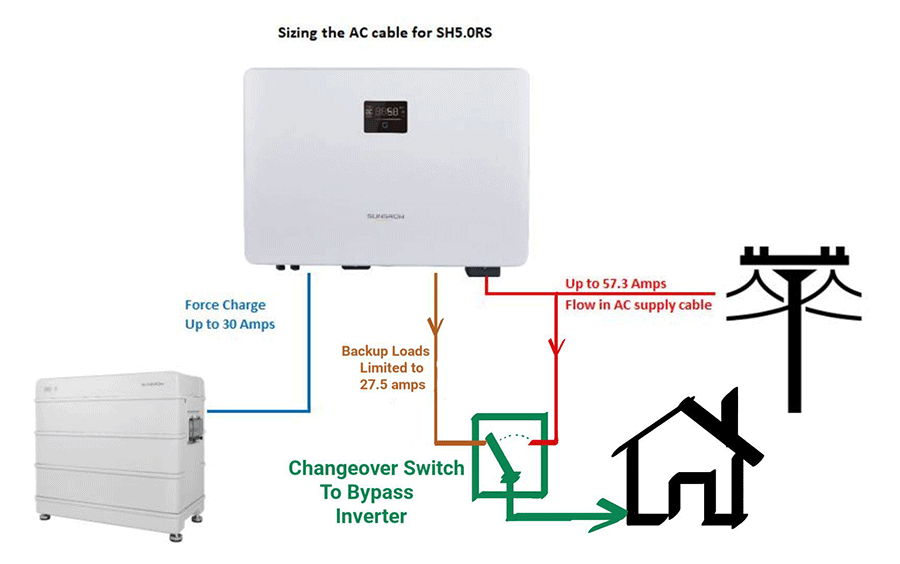
Heavy cables are needed to AND from the inverter. A manual changeover switch is also a great idea to bypass the inverter entirely if there’s a fault.
Why Not Backup *In Parallel* With The Grid?
Suppose you instead choose an inverter that operates in parallel with the grid, like the Fronius Gen24 or SolarEdge. In that case, you’ll only need one decent-sized supply cable, potentially freeing up the positioning of the whole system.
What’s the catch? The changeover time might be 3 or even 30 seconds – compared to ~20 milliseconds changeover with the Sungrow.
You can argue a long changeover is a feature, an unmissable analogue warning that the grid is gone and you need to curb your consumption. Still, many will prefer the seamless changeover of a Selectronic, Sungrow, Goodwe or Tesla system.
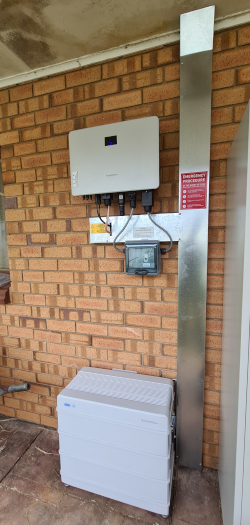
The metal cable tray is adaptable for carrying at least six cables into the roof, while the battery below only has two cables. image credit Solar Depot
Connectivity Is King
The new Sungrows have a tiny screen, relying on the monitoring platform to communicate. This makes them more heavily dependent on a good internet connection to monitor their behaviour and for installers to set them up. With the advent of flexible export connection agreements, mandatory in South Australia, optional in Queensland and coming to Victoria soon, having a solid internet connection is essential.
There are options for wired internet, WiFi dongles, and a 4G dongle that accepts a SIM card if you don’t have a local network. Annoyingly, the internet hardware only has a two-year warranty, which, as the system warranty relies on internet connectivity, strikes me as a rort.
While self-consumption is the name of the game in solar, exports are still handy for helping defray daily access charges. If your system is enrolled in Flexible Exports (mandatory in SA, opt-in in QLD, likely coming soon everywhere else), you may occasionally find you’re not allowed to export, but without a data connection, your system will be throttled to 1.5kW or even zero export.
Crucial tech tip.
When commissioning a Sungrow select the Australian server. Many clouds have been yelled at and many hours have been wasted when someone has missed this critical step early in the connection procedure.
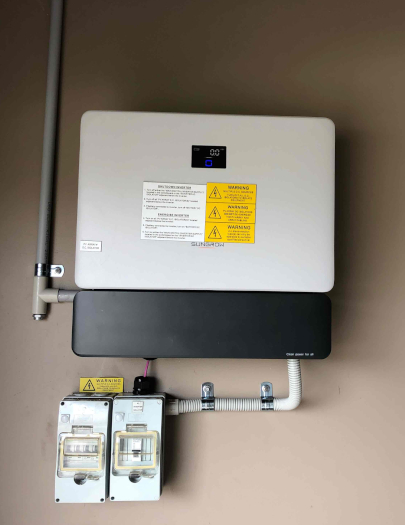
Sungrow now offer the black cover shown here to tidy up the multitude of things hanging off the bottom of the inverter. I would still put all the statutory jargon labels on the wall though.
Sungrow Monitoring Is Marvellous
The iSolar cloud app has plenty of detail and will allow you to program parameters for forced charging or limited grid input, depending on your preference. I have also seen a much slicker user interface in beta testing, which will be released soon. Installers quite like the range of features available with remote access, which can save service call fees.
Kim recently compared Solar Analytics vs Sungrow iSolarCloud, and as an ex-installer he preferred the Sungrow monitoring.
Simple Energy Management
The inverter has a single relay output that can be triggered for energy management duties such as activating a hot water service. Sungrow has also been testing in their Australian warehouse, so off-grid with generator support is available. Still, I must reiterate this shouldn’t be considered a true off-grid solution.
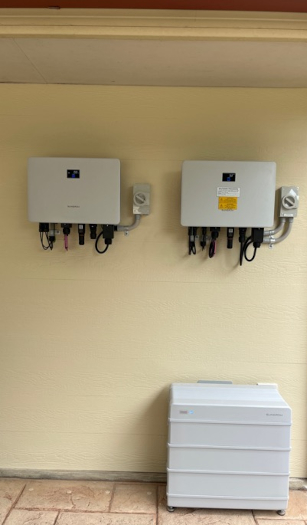
Full Three Phase Compatibility
Single and 3-phase consumption meters are available. Like the Fronius Gen24, Sungrow offers a 3 phase variant in this range of hybrid inverters, which I will endeavour to cover in an upcoming post. So if you have a particular 3-phase load or premises spread across all 3 phases, they can be backed up.
Be aware though, the Sungrow 3-phase hybrid inverters have less surge capacity for single-phase loads than an equivalent single-phase hybrid inverter.
Sungrow Is A Solid Choice
I have first-hand experience installing these machines, and while wiring up all the connections into a mess of plugs is a little tedious, everything is sealed with an IP rating, so it’s well-executed and weather tight.
Commissioning works well once you’re familiar with it, and the ability to zoom in on the graphs produced by the monitoring app is a real feature for this energy nerd.
My experience of Sungrow’s technical support has been historically fair to good, but it’s progressing to stellar. (They appear to be ramping up help available, so we’re not getting a foreign language answering machine anymore)
Have a look for yourself though; our Sungrow inverter reviews can be filtered for time, star rating and even wordiness, so you can see how the ratings have improved over three years and glean insight from end users just like yourself.
SH5.0RS: Technical Specs
For this comparison, I’ve specified an SBR128, i.e. four battery units, for a total 12.8kWh useable storage capacity. Warranty is 60% capacity at 10 years or 53.76MWh throughput. Happily, if you cycle it every day, this unit won’t exceed its throughput limit before the time is up on the 10-year warranty.
- Nominal capacity: 5kW (plus another 5kW with optional AC-coupled solar capacity)
- Surge rating: 8.4kW
- Solar capacity: 12kW
- PV current input: 16a nominal – 20a short circuit – each on two channels
- Usable Storage Capacity: 12.8kWh
- Warranty: 10 years – 60% battery capacity remaining – 53.76Mwh throughput
- Throughput limit @ 1 full cycle per day: 11½ years
- Approx retail: $15041 + installation
- $-per-usable-kWh: $1175
- $-per-warranted-kWh :$0.279 @ 1 cycle per day / $0.139 @ 2 cycles per day
- Three-phase option available with different specifications
Original Source: https://www.solarquotes.com.au/blog/sungrow-hybrid-inverter-review-2023/

